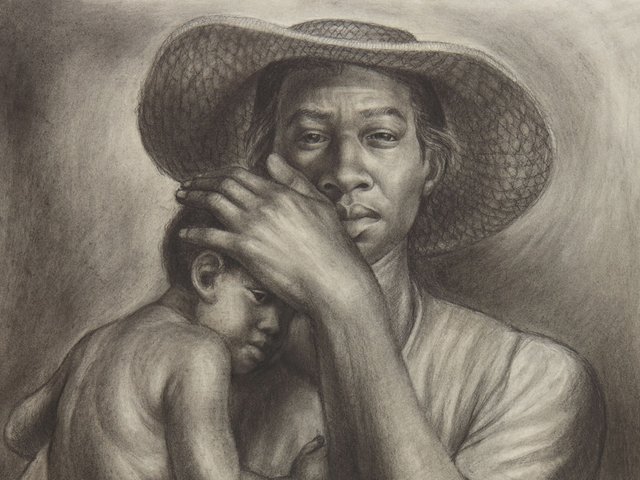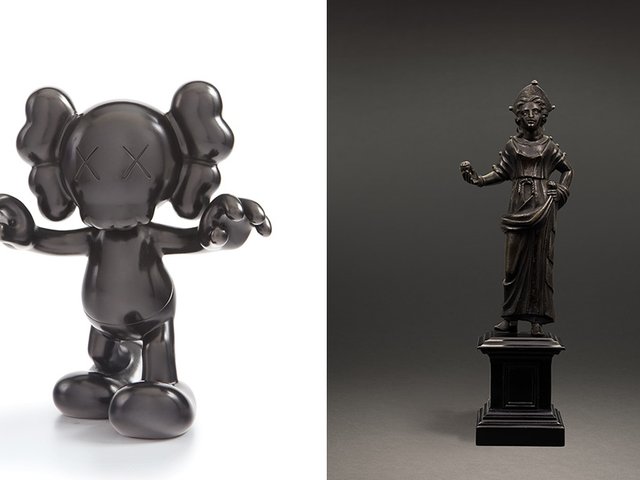Just before last Christmas, Raphael’s Head of a Young Apostle, around 1519, sold at Sotheby’s, London, for £29.7m—the highest ever price for a drawing at auction, but also the second highest price for any Old Master work. Head of a Muse, around 1490, was sold at the same London auction house in 2009 for £29.2m, reportedly to the New York financier Leon Black, while Study for the Risen Christ, a drawing by Michelangelo sold at Christie’s, London, in July 2000 for £8.1m.
Although these drawings are exceptional, the market for the medium is generally growing in appeal. Around 50% of participants in Old Master drawings sales have only come into this field in the past five years, according to Sotheby’s.
Asian buyers are strongly to the fore. Sotheby’s reports that this year bidding from that region is already up 67% on last year. Gregory Rubinstein, the worldwide head of the Old Master drawings department at Sotheby’s, points to Asian collectors’ interest in Western art of all varieties. “However, they do have a natural feeling for drawings thanks to their tradition of ink on paper.” (The most expensive work on paper ever sold is an 11th-century, ink on paper calligraphic scroll by Huang Tingjian, which went for $63.8m in Beijing in 2010.)
Also notable is the interest from collectors who have previously focused on contemporary art. In 2012, 30% of buyers at Sotheby’s Old Master drawings sales had also bought from contemporary auctions. In 2007, it was only 7%. Rubinstein thinks that the appeal for buyers from the contemporary art field is the inherently experimental character of the medium, which chimes with a tendency for contemporary artists to explore work that is in progress. As he observes, “when you are looking at a drawing, you are seeing the artistic process.”
Contemporary artists are also increasingly interested. One leading Chinese contemporary artist, who asked not to be named, is a regular bidder at auction. The conceptual artist and teacher, Michael Craig-Martin, who in 1995 curated a show of drawings, “Drawing the Line”, at London’s Southbank Centre, which spanned the Stone Age to the present day, understands why. “Art is always at its most interesting when artists are trying to find out something that isn’t properly understood.” As he points out, the Italian Renaissance masters drew to explore “everything about architecture, about the human body, about how cloth falls”.
Julian Brooks, the associate curator of drawings at the J. Paul Getty Museum in Los Angeles, has also noticed the appeal to present-day practitioners. “When I give talks, a lot of [local] artists come and listen,” he says. “Figurative artists in particular really admire the scale and technical virtuosity.”
Brooks points to the Getty’s pen and ink study of a young man by the Quattrocento artist Piero del Pollaiuolo, an early example of a full-frontal portrait when the still nascent genre was chiefly confined to Roman-style profiles. “This is a pivotal moment when the Renaissance was becoming conscious of itself,” he explains. “There’s anecdotal evidence it may be a self-portrait because the collar buttons are on the left rather than, as usual, on the right, suggesting that perhaps Pollaiuolo copied his image in a mirror.”
The fact that drawings often signal fundamental shifts in art history has not escaped connoisseurs. Brooks admits that it is now getting harder to compete with the likes of major collectors such as Black. “Drawings that would have been on the B-list are now the main item,” he says.
Fortunately, drawings continue to come to light. In January, astute curators at the Metropolitan Museum of Art spotted an ink and wash drawing by Jacques-Louis David depicting the Death of Socrates on sale at Swann Galleries auction house in New York. Catalogued as early 19th-century French school, it was snapped up by the museum for its high estimate of $700 ($840 with buyer’s premium). However, it is thought it could be worth more than $500,000.
Such abundance makes for compelling auction catalogues. In July, for example, Sotheby’s is offering 12 drawings by the superlative French draughtsmen Watteau, Fragonard, Boucher and Greuze. In the same sale, there are two outstanding drawings by Goya, both of which are estimated at between £1.2m and £1.6m.
Yet fine specimens can still be found regularly for diminutive sums. In Sotheby’s January sale, a red chalk depiction of a concert, catalogued as “Venetian school”, around 1700, sold for $5,625 (est $5,000-$7,000) because, according to Rubinstein, its anonymity counted against it. For a buyer drawn primarily to quality over a famous name, the fluid assembly of figures, their faces and instruments highlighted with delicate shading, was surely a steal.
Some of the most interesting opportunities are to be found among the British school, and it is no surprise that Brooks says that the Getty is looking closely at acquisitions in this area. He could do well to look at July’s sale at Bonhams, which is offering five sketches by Constable that include a pencil view of Coleorton Hall. The estimates for the drawings start at £8,000 to £12,000 each, rising to £60,000 to £80,000 for the Coleorton view. Yet lesser-known British artists such as 19th-century watercolourists John Varley and William Henry Hunt are available for much less. “You can buy very nice British master drawings for tens of pounds,” says David Dallas, the international head of Old Masters at Bonhams.
While not quite in this price bracket, there are drawings that represent good value on offer in London galleries for Master Drawings and Sculpture Week (28 June-5 July). Lowell Libson, for instance, has 40 drawings by James Ward that range in price from £150 to £20,000.
One of the reasons that the field has until now been confined to a comparatively small circle is because of the difficulties with display. Collectors tend to store their drawings in plan chests, and so in terms of the bling factor, it hardly compares to the impact of having a brand name contemporary artist on the wall. Yet Rubinstein claims that it is possible to have drawings on the wall—as long as precautions are taken. Most specifically they must be kept away from direct light. His own collection is doing fine “in the dark corners of the house”.
Originally appeared in The Art Newspaper as 'Drawing new buyers'



